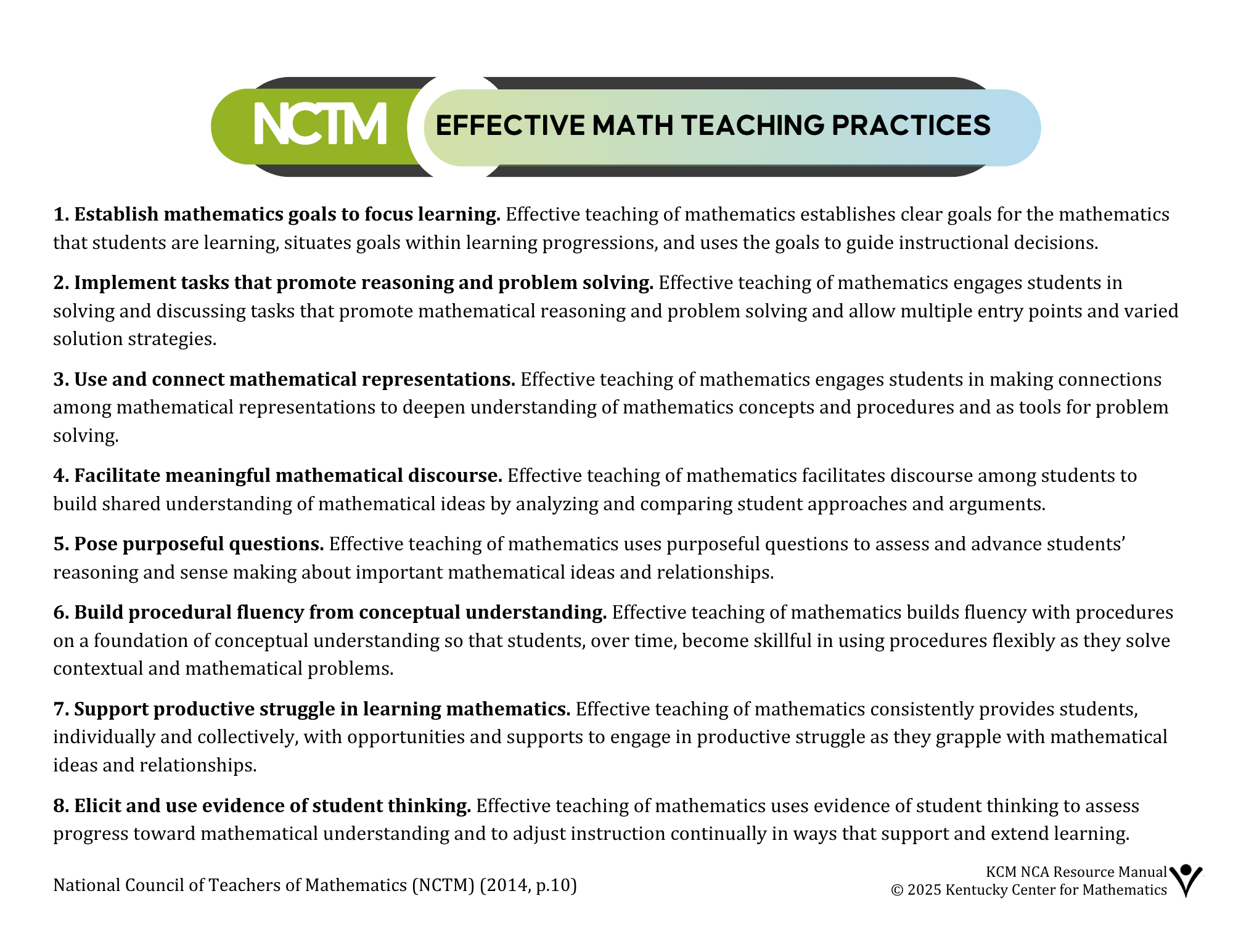A Framework for Powerful Math Instruction - Part 1
By Sandye Kabalen (someone who had to re-learn math to really teach it)
![]() For
24 years, I taught sixth-grade math - and I was good at it! I had great evaluations, positive feedback from families,
strong relationships with students, and a classroom that ran smoothly. But if I'm being honest, often many students just
weren't getting it. They could follow the steps I taught, but the learning didn't stick. And I wasn't sure why.
For
24 years, I taught sixth-grade math - and I was good at it! I had great evaluations, positive feedback from families,
strong relationships with students, and a classroom that ran smoothly. But if I'm being honest, often many students just
weren't getting it. They could follow the steps I taught, but the learning didn't stick. And I wasn't sure why.
“When procedures are connected with the underlying concepts, students have better retention of the procedures and are more able to apply them in new situations.” (Principles to Actions, p. 42)
The truth is, I was teaching math the way I had learned it. I used procedures, rules, and shortcuts that made sense to me. But then came the Common Core followed by the Kentucky Academic Standards. I remember being asked to teach how to divide fractions with models and I panicked a little. I didn't get it! And if I didn't understand it, how could I expect my students to?
“When students learn to represent, discuss, and make connections among mathematical ideas in multiple forms, they demonstrate deeper mathematical understanding and enhanced problem-solving abilities.” (Principles to Actions, p. 24)
That moment was a turning point. I started digging into the math I had taught for years, this time from a conceptual point of view. I attended professional learning through the Kentucky Center for Mathematics, and slowly, things began to click. I was excited to take this new way of thinking about math back to my students. The more I changed my approach, the more I began to see lightbulb moments in students who had struggled all year. Even the students who usually receive As in math without putting in much effort were thinking more deeply, making connections they hadn't before.
That's when I discovered NCTM's Effective Mathematics Teaching Practices (EMTPs) published in 2014. They gave me the language and structure to make sense of what I was beginning to experience - creating a classroom culture that prioritizes student thinking and deep understanding, not just getting the right answer. Teaching math today is about more than procedures. It's about helping students build confidence, reason through problems, and communicate their ideas clearly.
These eight research-informed practices work together to support high-quality instruction. They're not a checklist of strategies to “add” to your lesson—they represent a way of thinking about teaching that is intentional, student-centered, and grounded in what we know helps learners thrive.

Click here for a link to a printable version of the NCTM Effective Math Teaching Practices.
Where Did These Practices Come From?
 These practices were introduced in NCTM's 2014 publication, Principles to Actions: Ensuring Mathematical Success for All. This
publication was developed in response to a growing need: how do we help students develop the habits of mind described in the
Standards for Mathematical Practice (SMPs)? The SMPs were introduced in the Common Core State Standards for Mathematics in 2010,
and they describe what it looks like for students to be mathematically proficient - reasoning, constructing arguments, using
appropriate tools strategically, persevering in problem solving, and more. But for a while, I wasn't sure how to get students
there. I had the student standards, but I needed the teaching side. That's what these practices gave me. They showed me how to
plan and facilitate math instruction in ways that actually support students in developing those mathematical habits and in truly
understanding what they are learning.
These practices were introduced in NCTM's 2014 publication, Principles to Actions: Ensuring Mathematical Success for All. This
publication was developed in response to a growing need: how do we help students develop the habits of mind described in the
Standards for Mathematical Practice (SMPs)? The SMPs were introduced in the Common Core State Standards for Mathematics in 2010,
and they describe what it looks like for students to be mathematically proficient - reasoning, constructing arguments, using
appropriate tools strategically, persevering in problem solving, and more. But for a while, I wasn't sure how to get students
there. I had the student standards, but I needed the teaching side. That's what these practices gave me. They showed me how to
plan and facilitate math instruction in ways that actually support students in developing those mathematical habits and in truly
understanding what they are learning.
Over time, I began to see how they work together. Setting clear goals impacts the kinds of tasks I choose, facilitating discourse depends on the questions I ask, and building fluency is rooted in conceptual understanding. In Part 2, I’ll share how viewing the practices as a connected framework transformed not just my planning, but my day-to-day teaching, and how it helped me create the kind of math classroom I always wanted.
To purchase a copy of Principles to Actions, visit the National Council of Teachers of Mathematics (NCTM) website.
You will also find Spotlight Videos for each of the individual teaching practices on this website. You can find links to those below under Related Posts.